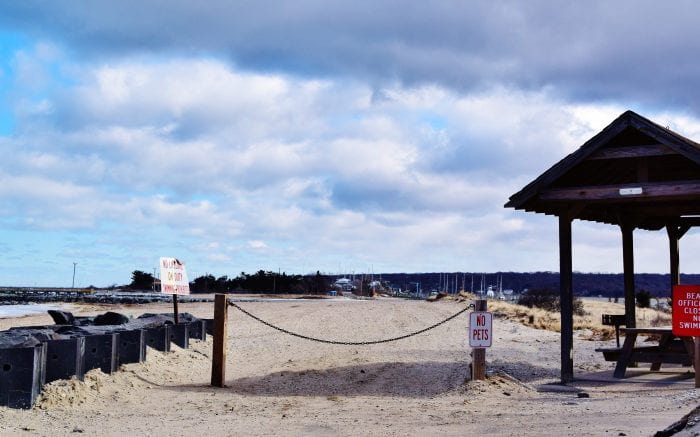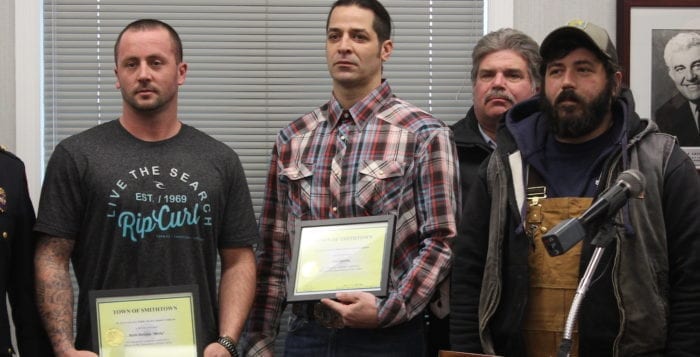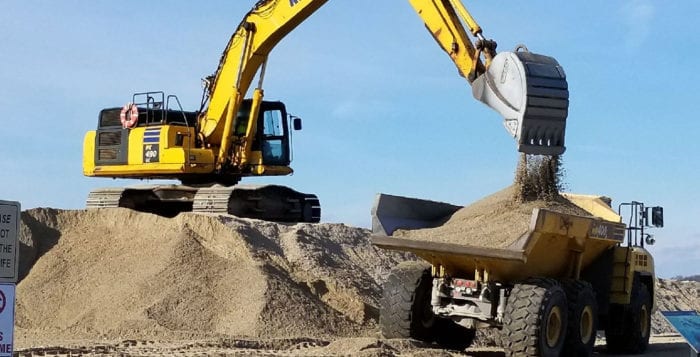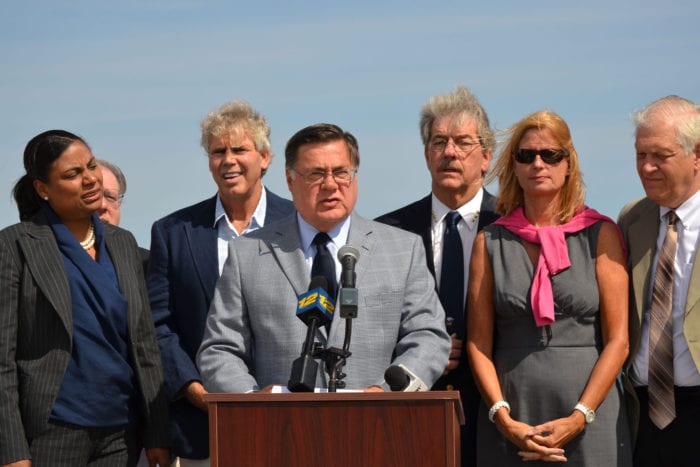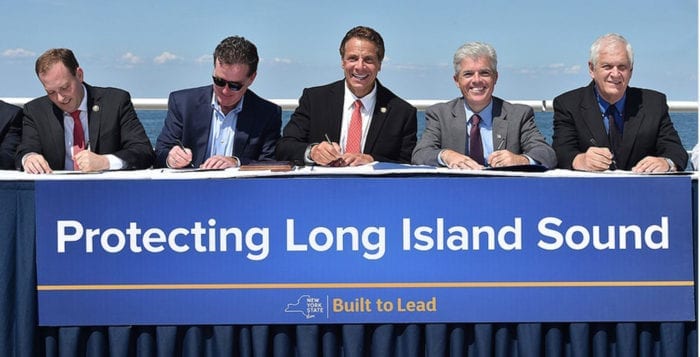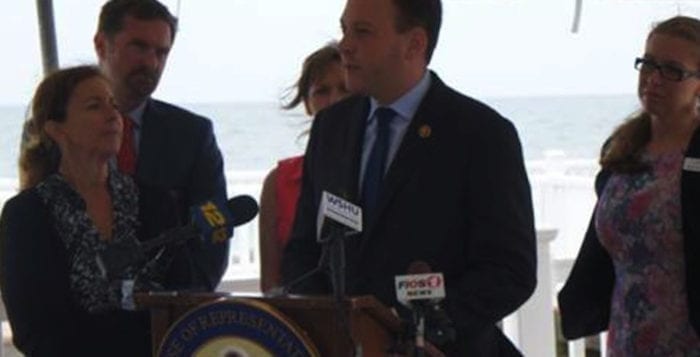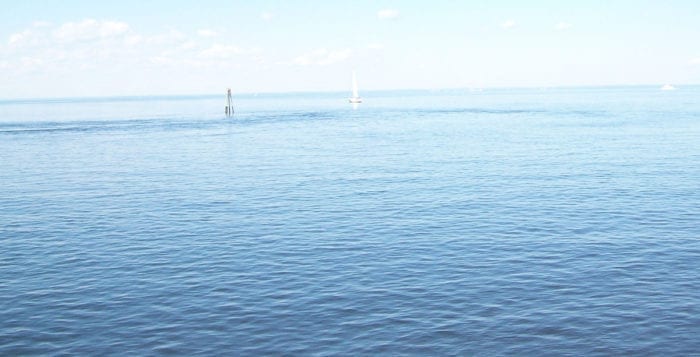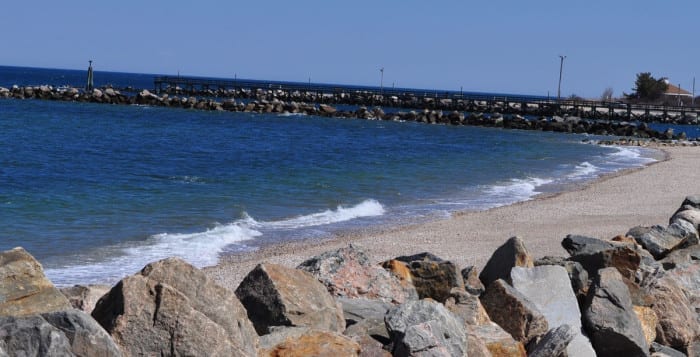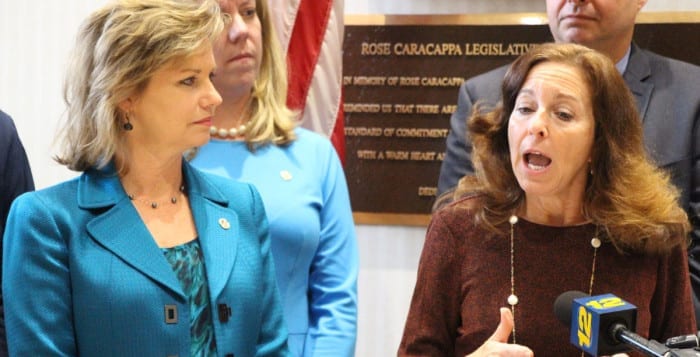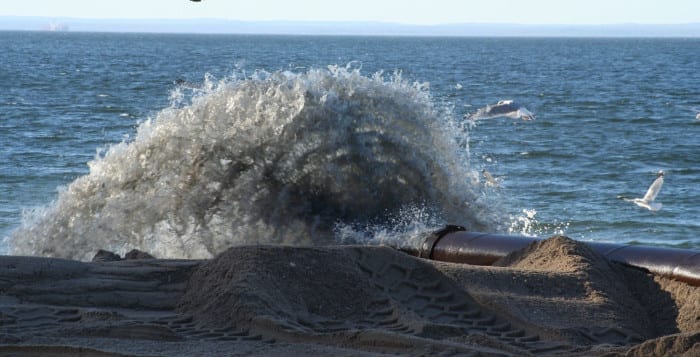The decade-long, multimillion-dollar project to spruce up Mount Sinai Harbor and its jetties is finally looking more complete, as the dredging project was finalized this past week.
In November of last year, the Town of Brookhaven permitted Suffolk County to complete the dredging at a total cost of $2 million with close to 80,000 cubic yards of sand.
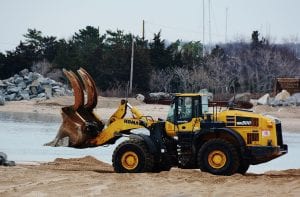
“This is just another project where the layers and layers and layers of government all the way up to the federal level worked together,” said Village of Port Jefferson Mayor Margot Garant.
But the project is more than baskets of sand returning to the local shorelines. After many years of planning, both the east and west jetties in Mount Sinai Harbor were repaired in May 2020. For 10 years, both have been largely submerged at high tide, with water and sand leaking through breaks in the stones and settling into the mouth of the harbor.
Garant added that after about 60 days, “basketfuls of sand” were brought back to Port Jefferson’s East Beach, which included sand from the postponed Stony Brook Harbor dredging project, to replenish the erosion caused throughout the years.
“We’re just so thrilled to have our beach back,” she said.
Brookhaven Councilwoman Jane Bonner (R-Rocky Point) said the completion of the project was a long time coming.
She said there were numerous issues with the jetties, the inlet and the harbor itself.
“We rebuilt the fishing pier that has been subjected to numerous nor’easters, built two new jetties and a complete dredge of the beaches,” Bonner said. “I’m hopeful it lasts a long time.”
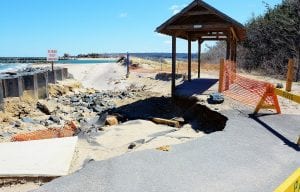
In November, the New York State Department of Environmental Conservation and the U.S. Army Corp of Engineers designated that most of the sand be primarily brought to the Port Jefferson side of the harbor. While Bonner admitted she hoped for an equitable split of sand, she’s happy that the goals of keeping recreational boaters and fishermen safe, while enhancing the North Shore’s water quality, have been achieved.
“All levels of government have put a lot of money and resources into this project,” Bonner said. “It’s a win-win.”
It’s not completely done, though. Garant said the next phase is to repair the retaining wall going down the hill and revegetate the bluff.
“It’s just an ongoing process of protecting our shoreline,” she said.

